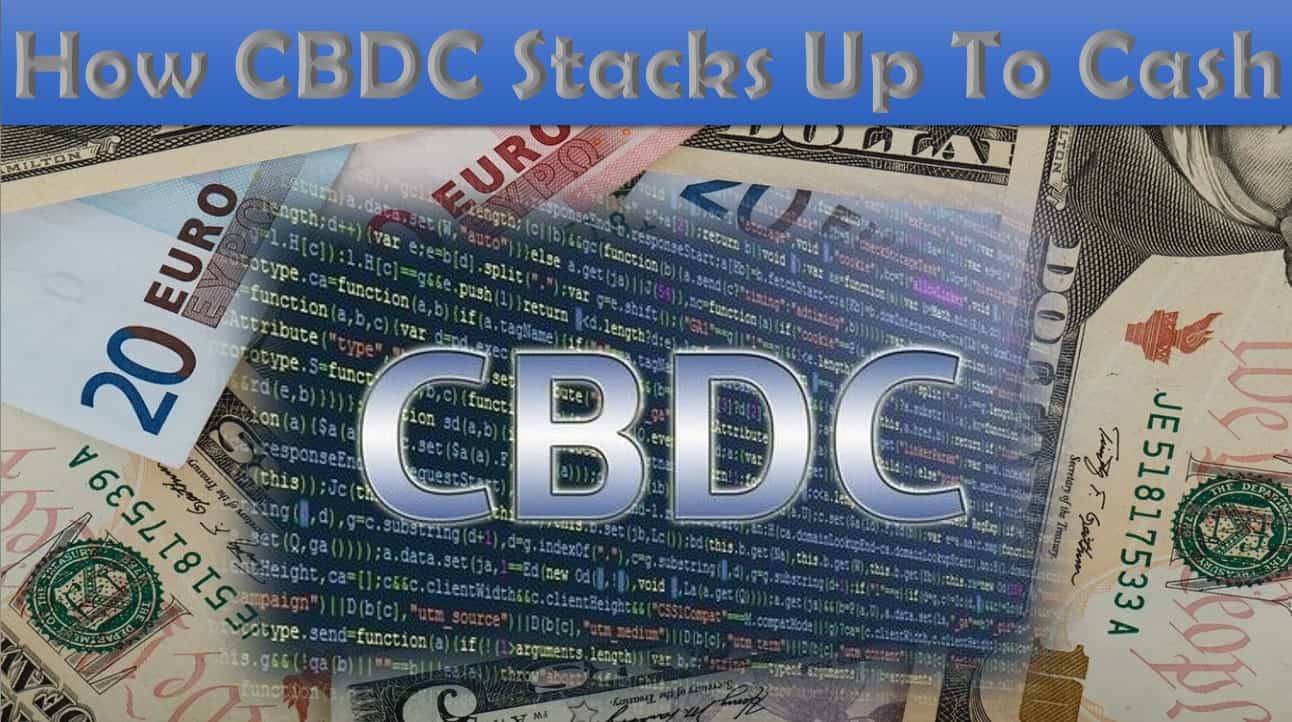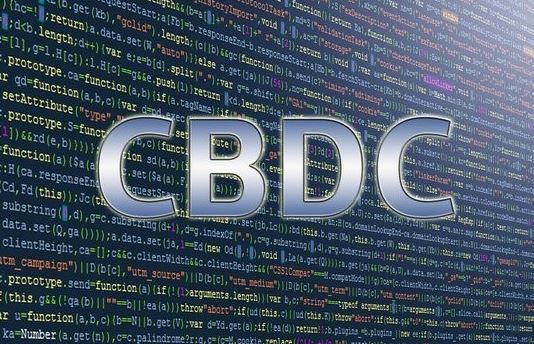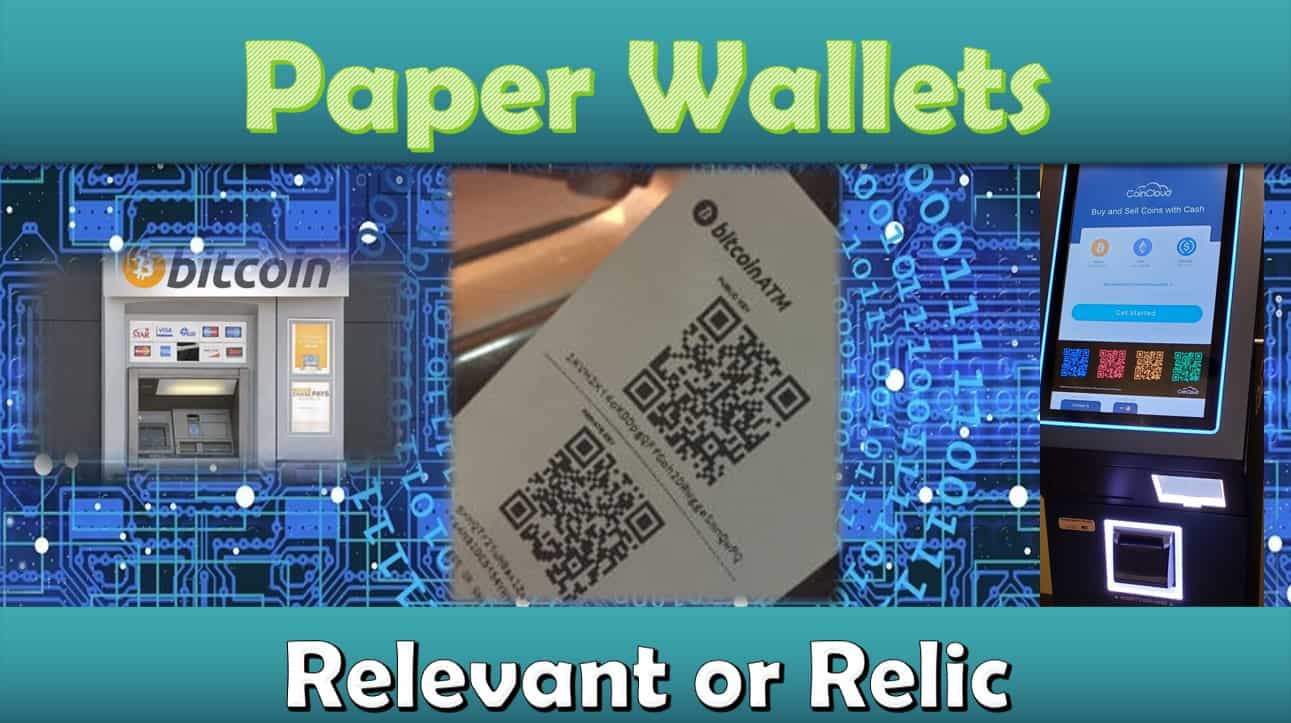
Debating the Dough: How CBDCs Stack Up to Cash
Last updated on June 8th, 2023 at 02:38 pm
On its face, you might be wondering, why do I need to know about the differences between a CBDC and cash?
Afterall, we’ve been using “digital money” for years. Our paycheck gets digitally deposited into our bank… we use our credit or debit cards to make purchases in person and online… and if we need to send money to someone in another country, we do so using digital money service like PayPal or Western Union.
But this new form of money is not like anything we’ve seen before.
Central Bank Digital Currency (CBDC) are digital versions of standard legal tender currencies issued by central banks. CBDCs exist only in the form of computer data and cannot be held or touched. CBDCs can be used for payments, deposits, investments, and more. By contrast, physical currency are tangible objects that can be physically circulated among users. Both physical money and CBDCs are controlled by central banks.
If you are to believe all of the rumors, there is currently a shift happening. It’s a shift of the guard, and physical money is out, while Central Bank Digital Currencies (CBDCs) are in.
But, what exactly is this new payment method, and will it really take over or is it just hype?
As debate rages on about whether CBDC can truly replace cash, let us explore the nitty-gritty details about what a CBDC is, as well as the pros and cons of each side.
Hopefully this will provide us a clear understanding of what to expect when it comes to the future of money.
Table of Contents:
What is a CBDC?
I’m going to make an assumption… that assumption is that everyone reading this article understands what cash is.
Given this website is written from the perspective of someone living in the United States, I think that’s a safe assumption.
That being said, everyone here may not understand exactly what a Central Bank Digital Currency (CBDC) is.
Our traditional financial system considers CBDCs a revolutionary new payment method that combines the convenience of digital currency with the reliability of physical money.
Can you say “Hello George Jetson”
It’s like taking a time machine to the future, allowing us to make instantaneous transactions without having to worry about lugging around bulky bills and coins.
In essence, it’s like traditional money but with an added layer of security and convenience.
Want a deeper dive?
Then you need to read this CBDC breakdown.
But right now, let’s take a look at how CBDCs stack up against cash.
CBDC vs Cash
Cash has been around for centuries and is considered a tried-and-true method of financial exchange. In fact, the first recorded use of cash dates back to the 8th century BC in the form of cowry shells, which were used as a medium of exchange in China.
In contrast, Central Bank Digital Currency (CBDC) is a relatively new way to transact money quickly and securely.
Although cash may be the more familiar option, CBDC’s offer an exciting alternative.
This alternative comes with modern benefits and drawbacks.
In a nutshell, with CBDCs, users can expect greater traceability of transactions, a streamlined way to send money globally, and lower fees than traditional payment methods.
Advantages & Disadvantages of Cash
| Advantages | Disadvantages |
|---|---|
| Privacy | Higher Use & Maintenance Costs For Banks |
| Holds Legal Tender Status | Inefficient Cross-Border Payments |
| Ease of Use | Financial Inclusion |
| Cash Oriented Discounts | Credit & Liquidity Risk |
| Budgeting | Theft Threat |
| Limited To In-Person Transactions | |
| Tax Evasion |
Advantages & Disadvantages of CBDC
| Advantages | Disadvantages |
|---|---|
| Cost Efficient For Banks | No Privacy |
| Potential Financial Inclusion (Both) | Programmability |
| Quicker & Lower Cost Cross-Border Payments | Potential Financial Exclusion (Both) |
| Free From Credit & Liquidity Risk | Potential Legal & Regulatory Issues |
| Portability | Banking System Disruption |
| Monetary Policy Influence | |
| Need For Increased Cyber Security | |
| Necessary Learning Curve |
So whether you’re a fan of the old-school paper or captivated by the new digital currencies, there are pros and cons to both methods.
But, how do CBDCs compare to cryptocurrencies?
CBDC vs Cryptocurrency

When it comes to CBDCs and cryptocurrencies, there are both similarities and differences.
The most glaring difference is that CBDCs are centralized and cryptocurrencies are decentralized.
Centralized and Decentralized currency can be compared to the classic story of Jekyll and Hyde.
Centralized currency is like Dr. Jekyll, a generally more stable and controlled approach, where the government controls what happens with its use. CBDCs are issued, and controlled by Central Banks and governments.
On the other side of the coin, we have Decentralized currency that acts as Mr. Hyde. Without a central authority, it can often be unpredictable.
Crypto, done right, is decentralized by nature, runs on consensus protocols and has no central entity controlling it.
The centralized vs decentralized nature of each also provides the next glaring difference between the two… the code differences between CBDCs and cryptos.
CBDCs offer more programmability than cryptocurrency. Because of its centralized control, CBDCs can be programmed to do anything, such as expiring, only being used to purchase certain items, etc.
Cryptocurrency on the other hand, due to its decentralized nature has less programmability. Generally, these currencies are open source code which can be seen by all, and vetted to prevent any bugs or back doors that could allow for theft or fraud.
Fortunately, both offer an alternative to traditional cash payments and provide enhanced security features that could be beneficial for users.
As we mentioned at the beginning of this post, the world as a whole is moving toward being cashless. I took a deeper look at the potential of cryptocurrency replacing the dollar… check that out here.
Want to take a different look at this question?
No problem… check out this article where I dive into digital money replacing paper money.
So, in the end, when it comes to CBDCs vs cryptocurrency, you just need to decide which form of currency will better suit your needs.
CBDC Replacing Cash?
The age-old question: will cash become obsolete?
Well, it may not be the only way to pay anymore. With the rise of CBDCs, it’s possible that physical money will become a thing of the past.
After all, who needs carrying around wads of paper when you can just use your digital wallet?
It’s faster, more secure, and much more convenient.
Sure, there’s something comforting about the jingle of coins in your pocket or a crisp $20 bill in your wallet, but with CBDCs on the rise, it looks like we may be waving goodbye to cash soon.
One thing is for certain, all this talk about a CBDC definitely makes you wonder about how things would be in a cashless economy.

Check out my discussion about that here.
There will be many things that affect the adoption of a CBDC leading to the replacement of cash… let’s take a look at some of them.
Factors Affecting CBDC Adoption
To determine whether CBDCs can eventually oust cash, there’s a few factors that might come into play.
First off, the potential legal and regulatory issues of introducing a new system needs to be addressed.
A lot of governments around the world will want to make sure that their rules are followed with this new currency before they consider allowing it to replace cash.
Second, there’s the matter of public perception and trustworthiness.
After all, people are more likely to use something if they know that it’s safe and reliable. This means that banks and governments will have to do their best to ensure that CBDCs offer strong security measures like encryption and authentication to make sure that the system is secure.
Finally, there’s the question of convenience.
Is CBDC simpler than cash?
It needs to be more convenient in order for people to want to use it, otherwise, why bother making a switch?
On top of this, people will also need to have access to the technology to actually use CBDCs.
It’s clear that there are a lot of factors to consider before CBDCs can truly replace cash. Only time will tell if this new form of digital money will become the primary way people exchange value.
But more than this, the swap to a CBDC can have negative implications to the current financial system.
Implications of CBDC Adoption
The adoption of CBDCs could have a huge impact on the current financial system.
Besides the idea of potentially leading to the demise of paper money, it could lead to the end of traditional banking as we know it currently.
After all, banks are traditionally used for storing and transferring money, but CBDCs would allow people to do this without the help of a bank.
Finally, it could also mean more control for the government.
Instead of relying on third-party entities to move money around, CBDCs could give them greater oversight and control over who is using their currency. Not to mention, governments could impose conditions and restrictions on the use of a CBDC.
So all in all, while the implications of swapping over to CBDCs are still up for debate, one thing’s for sure, the potential of cryptocurrency replacing the dollar is looking more and more likely.
Cash, CBDCs and Beyond
Cash may be king right now, but it looks like the throne won’t stay empty for long. With the rise of CBDCs, physical money may soon become a thing of the past.
The convenience and security that these digital currencies offer make them an attractive option for those looking to do away with paper bills and coins.
However, before we can completely transition away from paper money, there are a few issues to consider such as legal and regulatory implications, public perception and trustworthiness, and convenience.
Beyond the potential to replace cash, CBDCs could also have wider implications on the current financial system, potentially leading to the end of traditional banking and giving more control to governments.
All this to say, it looks like we may be entering the era of digital money sooner than expected.
Frequently Asked Questions (FAQ)
Q: What are the differences between CBDCs and cash?
A: The biggest difference between CBDCs and cash is that CBDCs are digital, while cash is physical. This means that transactions with CBDCs can be done quickly and easily online, while transactions with cash need to be done in person. Additionally, CBDCs offer more security than cash as they are encrypted and authenticated.
Q: Is it possible for CBDCs to replace cash?
A: It is possible that CBDCs could replace cash in the future, but there are a few factors that must be considered first. These include legal and regulatory implications, public perception and trustworthiness, and convenience. Only time will tell if this new form of digital money will become the primary way people exchange value.
Q: What implications could the adoption of CBDCs have on the current financial system?
A: The adoption of CBDCs could have a huge impact on the current financial system. It could lead to the end of traditional banking as we know it currently, as well as giving more control to governments. Additionally, it could mean more security for users when transacting online.
Q: What should people consider before CBDCs can truly replace cash?
A: People should consider factors such as legal and regulatory implications, public perception and trustworthiness, and convenience before CBDCs can become a replacement for cash. Additionally, it would be important to ensure that everyone has access to the necessary technology in order for CBDCs to be used as a primary form of currency.
Disclaimer
The information provided here is for INFORMATIONAL & EDUCATIONAL PURPOSES ONLY!
View our complete disclaimer on our Disclaimer Page






